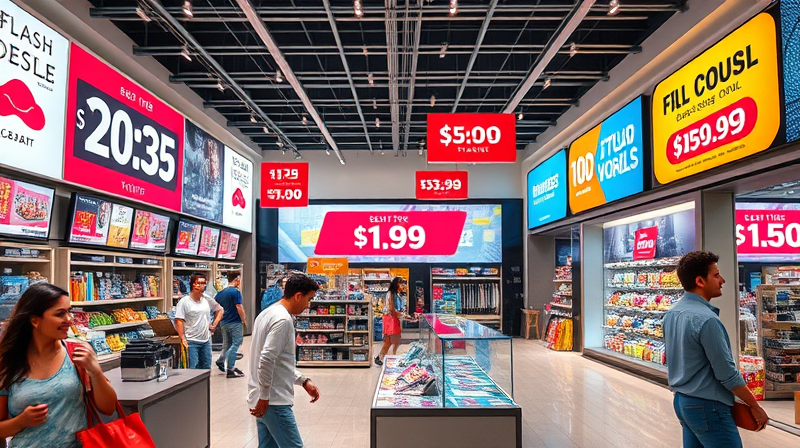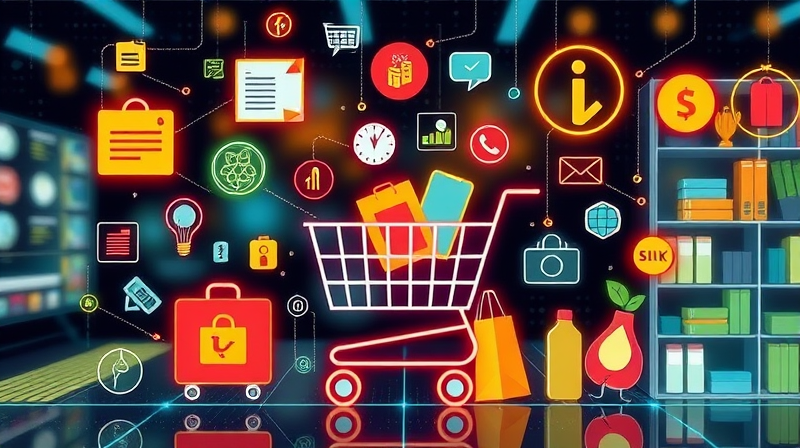In today's fast-paced market environment, making the most of sales and clearance promotions is essential for thriving in the competitive retail space. With careful planning, creativity, and the right strategies, businesses can not only clear inventory and boost revenue but also build lasting brand loyalty. Innovative promotional techniques are at the heart of achieving these ambitious goals.
This article explores key strategies and insights that enable businesses to harness the full potential of sales and clearance promotions while keeping customer engagement at the forefront.
Understanding Promotional Objectives
Every successful promotional campaign begins with clear and measurable objectives. Whether a business aims to clear out old inventory or attract new customers, the promotional path should be tailored to meet specific targets. In addition to driving immediate sales, it is crucial to use these opportunities to build a stronger connection with your market by:
- Stimulating consumer interest through seasonal resets
- Building brand awareness across multiple channels
- Encouraging repeat purchases by offering exclusive deals
- Creating a buzz with limited-time offers and flash sales
When goals are clearly defined, every step of the promotion is aligned toward achieving both short-term and long-term success, driving revenue growth and increasing customer loyalty.
Types of Promotional Strategies
There are various promotional strategies tailored to different business needs and consumer trends. Each approach provides opportunities to connect with different segments of your market.
Seasonal and holiday sales are pivotal moments in the retail calendar. Special shopping periods such as back-to-school, summer clearance, and major events like Black Friday and Cyber Monday produce heightened consumer interest. By aligning sales with specific seasons, businesses can effectively clear out older inventory while keeping the store fresh and relevant.
Flash sales and limited-time offers create a surge of excitement and urgency among customers. These promotions leverage urgency by using features such as countdown timers or displays signaling low stock availability. The result is an immediate spike in conversions, as customers are more likely to make a purchase quickly rather than delaying their decision.
Digital-driven promotions have come to the forefront as more consumers shift towards online shopping. Online coupons, temporary price reductions, and exclusive digital discounts allow businesses to target consumer behaviors by personalizing offers and reducing overhead costs, making these strategies both cost-effective and efficient.
Furthermore, loyalty and referral programs are instrumental in nurturing long-term customer relationships. By offering rewards, early access to exclusive deals, or referral discounts, businesses ensure that each promotional event not only brings in new customers but also strengthens the bond with existing ones.
Technology and Innovation in Promotions
Technology has reshaped the promotional landscape by simplifying data management and enabling real-time adjustments to campaigns. Using advanced tools and analytics, businesses can:
- Track campaign performance and measure return on investment (ROI)
- Personalize customer offers based on purchasing behavior
- Streamline multi-channel marketing for a unified message
Harnessing the power of AI and analytics ensures that every promotional campaign is fine-tuned for maximum impact. Platforms that integrate data management help predict consumer responses and enable rapid adjustments, ensuring promotional campaigns remain agile and effective.
For instance, solutions provided by platforms like Promomash and Crisp enable businesses to manage inventory, track deductions, and optimize promotional spend. These tools bridge the gap between planning and execution, ensuring that each promo campaign maintains consistency across digital and traditional channels.
Best Practices for Successful Promotions
To gain the most from sales and clearance events, it is vital to implement a set of best practices. The following guidelines offer a roadmap to designing compelling and profitable promotions:
- Set Clear Goals: Clearly define whether the focus is on clearing inventory, generating buzz, or increasing revenue.
- Know Your Audience: Understand customer demographics and preferences; tailor each promotion for a more personalized experience.
- Create Urgency: Implement time-sensitive offers to drive immediate actions from consumers.
- Leverage Multiple Channels: Utilize social media, email campaigns, and even in-store promotions to expand reach and visibility.
- Monitor and Adapt: Use real-time data and feedback to continuously improve ongoing promotions.
By integrating these practices, businesses can ensure that each promotional campaign not only achieves immediate sales goals but also sets the stage for long-term growth and customer loyalty.
Embracing Consumer Insights for Future Growth
Consumer behavior is evolving, making it imperative to stay ahead of trends. In the age of digital transformation, customers expect personalized and frictionless shopping experiences. Modern buyers value promotional transparency, simplicity, and the assurance that each purchase is aligned with their personal values.
Progressive retailers are adapting by integrating sustainability and cause-based initiatives into their promotions. For example, offering a percentage of profits to support community causes can resonate deeply with socially conscious consumers. These initiatives not only boost immediate sales but also fortify the brand’s reputation in the long run.
The increased reliance on digital mediums has also changed how promotions are crafted. Engaging designs and streamlined messaging across platforms create a seamless customer journey that is both compelling and efficient. With clear messages and a focus on personalization, businesses can build stronger and longer-lasting relationships with their customers.
In essence, leveraging sales and clearance promotions effectively is an ongoing process of innovation and adaptation. By integrating technology, understanding consumer needs, and implementing best practices, businesses can transform routine sales events into powerful tools for sustained growth and brand loyalty.







